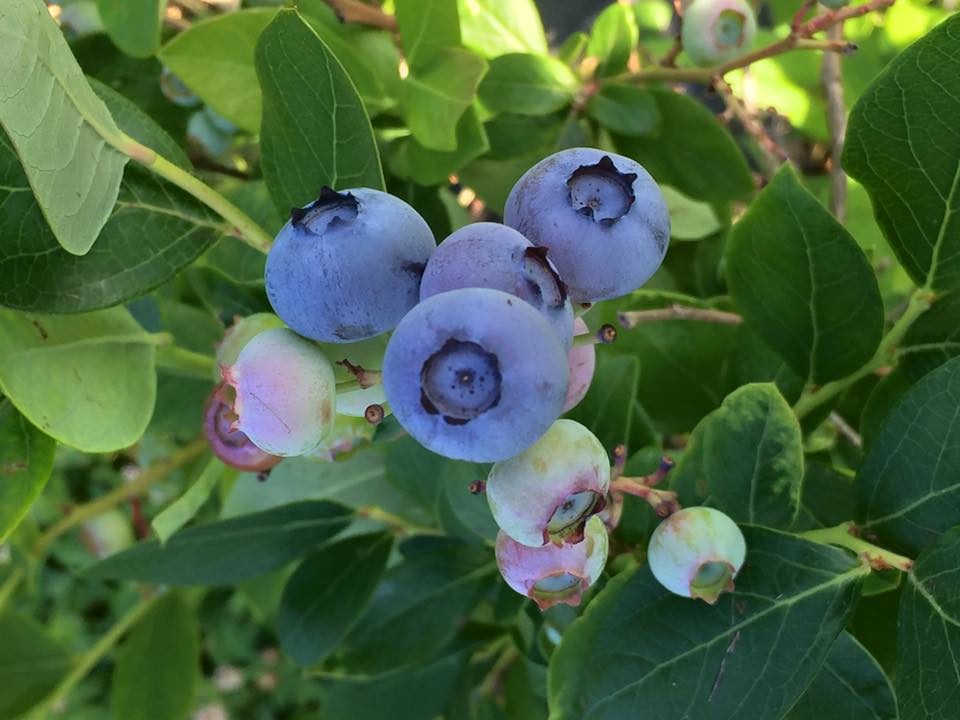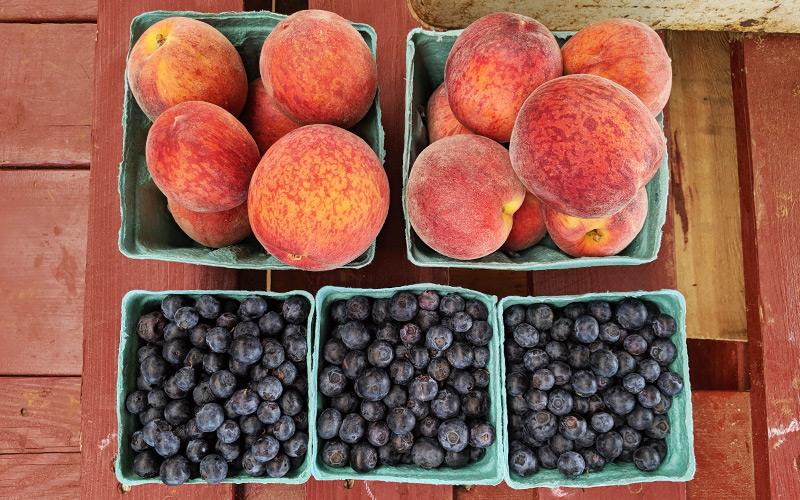Types of Blueberries
There are four different types of blueberries: highbush, lowbush, hybrid half-high, and rabbiteye.
You’ll find highbush blueberries in our fields, which are known for their blue color, large size, and sweetness.
Blueberries are generally in season during the month of June. While the season may be short, it is definitely sweet!

Picking Blueberries
Sweet and juicy blueberries are the hallmark of the summer. Luckily, blueberry picking is fun and easy:
- Hold your basket underneath a cane of ripe blueberries.
- Gently run your hand underneath the blueberries.
- Ripe berries will fall off the bush into your basket, easy as that! If you have to pull on the berry, it likely isn’t ready to eat.
Ripe blueberries are deep blue in color. While picking, you’ll likely see blueberries that are still white, green, or pink. Those berries are tart and are not ready for harvest.
Keeping Blueberries Fresh
Like any fresh-picked fruit, blueberries are best eaten sooner rather than later. With the proper storage, blueberries will last for a week and a half.
To keep berries fresh for as long as possible:
- Store them in the refrigerator.
- Choose a storage container that allows airflow.
- Spread the berries out as much as possible (if your fridge space allows).
- Wait to wash the berries until right before you eat them. Washing berries before storing them in the fridge can make them break down more easily.

Freezing Blueberries
If you’ve picked more blueberries than you can eat, there are still plenty of ways to save and enjoy them! Frozen blueberries are delicious in smoothies, as a dessert topping, and even by themselves.
To freeze blueberries:
- Rinse your blueberries and pat them dry with a paper towel. Make sure that your berries are completely dry before moving them to your freezer container.
- Use resealable freezer bags or a storage container that allows air flow.
- Place in the freezer for up to 10 months.






